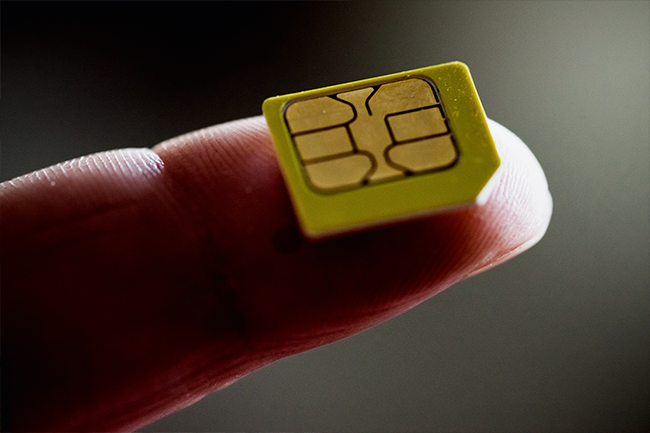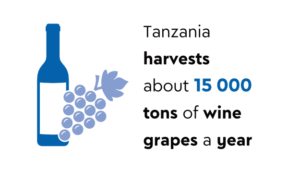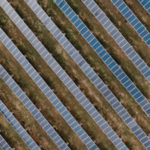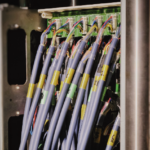Shortly after Apple launched its latest operating system in September, iPhone users in South Africa started noticing their internet signals suddenly dropping. That wasn’t a bug; it was a feature. iOS 15 has been optimised to connect to 5G networks wherever possible, so those phones were defaulting to the country’s nascent 5G network.
It’s a minor irritation on the world’s – and Africa’s – road to 5G connectivity. And when 5G arrives in full force, it’ll be well worth the wait. Speaking to Rakesh Lakhani, head of networks solutions at Ericsson Middle East and Africa, it quickly becomes clear how excited he – and the rest of the telecoms industry – is about its possibilities. ‘5G’s super-fast download speeds, low latency, capacity and spectral efficiency hold potential for a multitude of use cases in Africa, spanning both consumer and enterprise segments,’ he says. ‘The high speed and low latency of the network enable enhanced broadband experience and provide a platform for cloud, IoT and AI-based services. These digital technologies, enabled by 5G, could help countries across Africa overcome the shortage of physical infrastructure stumbling their access to education and healthcare.’
Lakhani adds that 5G also holds tremendous potential to enable financial inclusion across the continent by accelerating mobile money and digital payment services. ‘With Africa having a vibrant tech ecosystem and a home-grown AI community, 5G could enable massive innovations that boost and enhance the livelihoods of residents,’ he says. ‘Additionally, with cloud services being one of the main pillars of Africa’s digital transformation, 5G has the potential to accelerate the development and deployment of cloud-centred applications and start-ups that boost the overall productive capacity of the continent.’
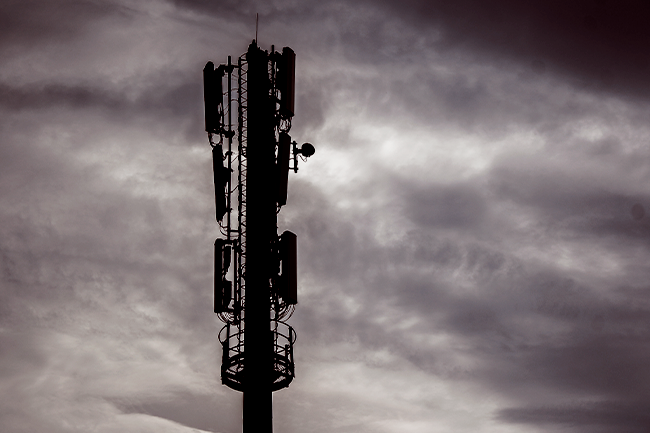
The numbers back him up. The fifth-generation tech standard for broadband cellular promises an unimaginable upgrade on the current 4G standard, with far lower latency, data speeds up to 100 times faster, and an ability to support up to 1 million connected devices per square kilometre (compared to 4G’s comparatively paltry 100 000).
2021 has seen a spike in 5G deployment. The latest edition of the Ericsson Mobility report notes that ‘the speed of 5G uptake is far higher than it was for 4G, let alone 3G, and it is one more sign of an industry that tirelessly continues to drive innovation and bring new technology to the market’. More than 160 communications-service providers have launched 5G services; at least 300 5G smartphone models have been announced or launched commercially; and more than half a billion global users will be connected to 5G by the end of the year.
South Africans can’t wait. In May the country’s Department of Communications and Digital Technologies announced that ZAR27 billion had been pledged by operators and vendors to ‘expand the 4G network and to deploy the 5G and fibre technologies in South Africa’. The announcement came shortly after mobile giant MTN launched 100 5G sites around the country.
It also followed Safaricom’s September announcement that it had launched a 5G network in Kenya, using technology from Nokia and Huawei. Safaricom CEO Peter Ndegwa called it ‘a major milestone for the country’, adding that as part of its trial, the company planned to roll out up to 200 5G sites by the end of 2022. Those trials aim to test whether customers can enjoy speeds of up to 700 Mbps per second, with plans to eventually offer connection speeds of more than 1 000 Mbps.
Nigeria followed soon thereafter. In May 2021, it became the third African country to pioneer 5G deployment when its national communications agency signed an MoU with communications satellite firm NigcomSat to allow 5G services to piggyback on its C-band frequency spectrum. ‘The importance of this spectrum for early deployment of 5G services in Nigeria cannot be overemphasised,’ said Umar Garba Danbatta, Nigerian Communications Commission vice-chair. In August, Danbatta declared that Nigeria’s state of 5G readiness was ‘very high’.
And so the floodgates opened. Next came Ghana, where MTN announced its intentions to launch and make operational 5G services in the West African country by 2023. Although MTN has yet to fully cover Ghana with its 4G spectrum, it aims to achieve 98% 4G coverage by the end of 2022 before deploying 5G in 2023.

‘5G roll-out is still in its early stages in Africa. However, Africa remains the region with the highest growth rate in mobile subscriptions globally,’ says Lakhani, pointing to forecasts that show sub-Saharan Africa reaching 70 million 5G subscriptions by 2026.
‘Knowing the tremendous potential the technology has to drive inclusive digital growth in the continent, we have been working with our regional partners to modernise networks and identify digital transformation use cases to make 5G a reality in Africa,’ he adds.
‘In 2018 we conducted the first 5G trial in Africa, which achieved a throughput of more than 20 Gbps with less than 5 ms latency – the highest achieved on a mobile network in Africa. Following the success of the trial, we moved on to deploy the first 5G customer trial in South Africa in late 2018. In 2020 we launched a live 5G network in South Africa and Madagascar, and are committed to further drive 5G across the region and realising its full potential in the continent.’
At the current pace, South Africa is expected to reach 11 million by 2025 with a population coverage of 43%, according to research by consultancy firm Africa Analysis. That, again, is consistent with the uptick in deployment; and it’s significantly up on the 90 000 subscribers and 4.4% population coverage 5G enjoyed as recently as the end of 2020. The Africa Analysis attributes that growth to two key drivers – the recent spectrum auction; and the availability of 5G devices, specifically in the low-cost segment.
The focus, then, is on who will get 5G first… And who will be left out? The latter group is a real concern in Africa, where enabling technologies tend to deepen the existing inequalities. In Nigeria, Danbatta recently responded to reports that about 25 million people in 114 telecoms clusters would remain outside mobile (and 5G) coverage areas. At a meeting late last year, he said that ‘when I came on board, 217 access gap clusters were identified in the country affecting 40 million Nigerians without access to telecoms services. But today, we have reduced the access gap clusters to 114 with 15 million of the 40 million digitally excluded Nigerians now having access to telecoms services. We are committed to addressing the remaining access gap clusters, which are areas outside the frontier of economic viability to ensure the remaining 25 million Nigerians have access’.
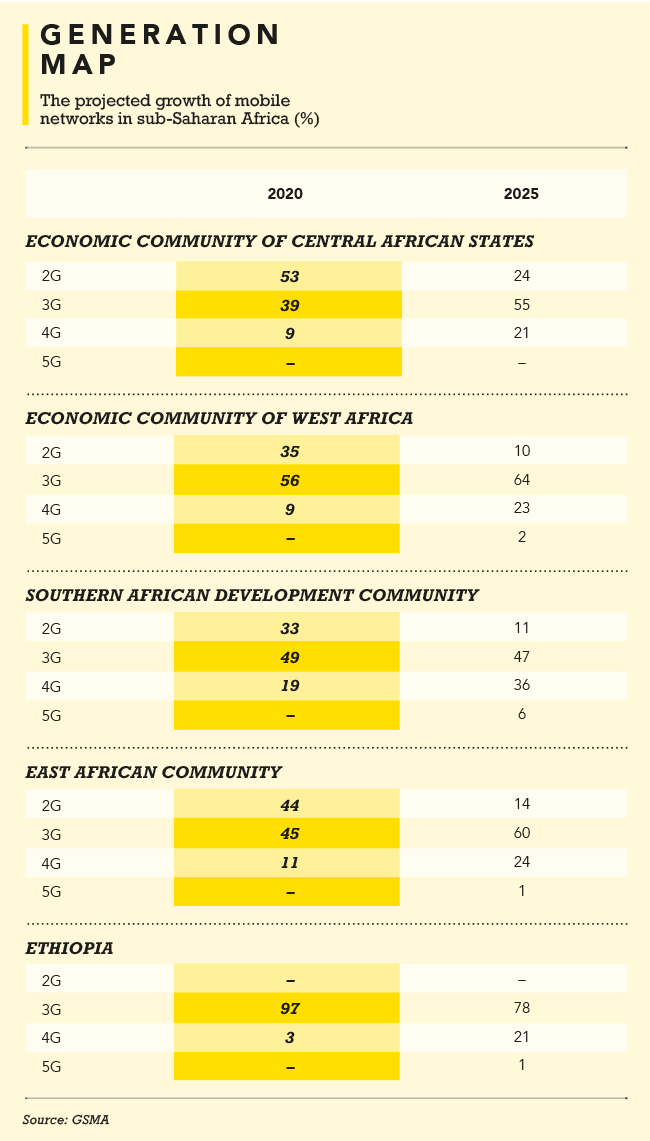
Given Nigeria’s total population of just more than 200 million, 25 million might seem an acceptable gap – at least in the short term. Not so. ‘Even with that number, it is not acceptable,’ said Danbatta. ‘No part of the country should be denied access to telecommunications services consistent with the stipulation of inclusiveness in the provision of telecommunications services.’
Ronan Dunne, group CEO of tech company Verizon Consumer, argues that 5G could, in fact, broaden digital access through cloud-based storage solutions, which would significantly lower the cost of mobile devices. ‘To put it bluntly, tech is getting cheaper even as it’s becoming more powerful,’ he writes for the WEF. ‘That is an amazing combination, and here’s just one example of how it works. One of the tech breakthroughs that 5G makes possible is something called mobile-edge computing, or MEC.’ MEC, he explains, is about the provision of cloud storage capacity at the edge of the network itself.
With so much storage available on 5G networks, Dunne argues that devices such as laptops and tablets and phones could be smaller and cheaper. After all, he writes, ‘they no longer have to hold much storage capacity, since the network now takes care of that. […] By taking the computing and heavy work out of the device, and putting it at the edge of the network, we can transform virtual-reality headsets from US$1 500 luxury toys to US$100 mass market portals to new realms of education, entertainment and exploration. The potential implications of this shift are extraordinary’.
Indeed they are. And as those 5G-enabled iPhone users would tell you, the 5G shift is already happening.
By Mark van Dijk
Images: Gallo/Getty Images

